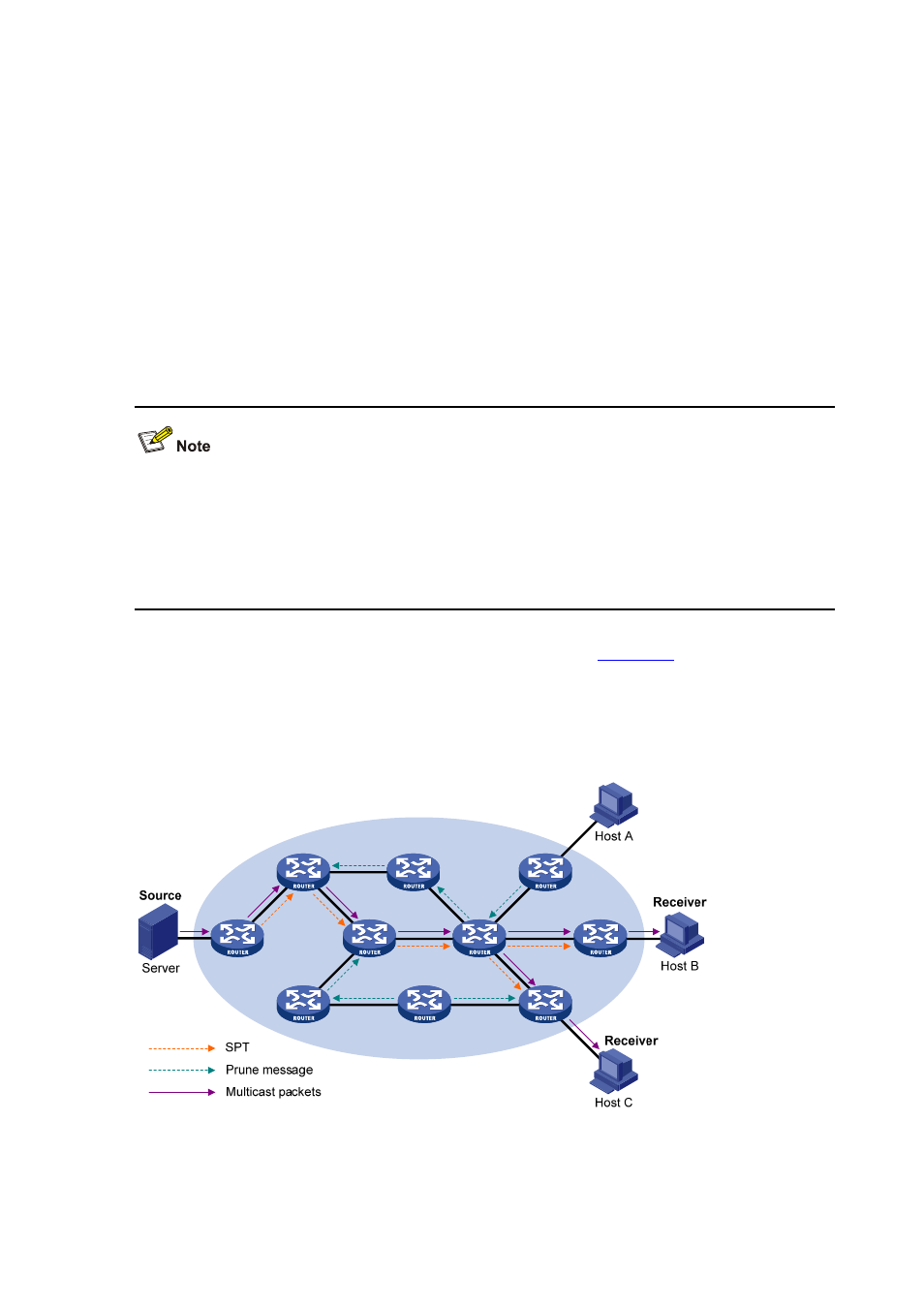Spt establishment – H3C Technologies H3C S7500E Series Switches User Manual
Page 140

6-3
SPT establishment
The process of building an SPT is the process of “flood and prune”.
1) In a PIM-DM domain, when a multicast source S sends multicast data to multicast group G,
the multicast packet is first flooded throughout the domain: The router first performs RPF
check on the multicast packet. If the packet passes the RPF check, the router creates an (S,
G) entry and forwards the data to all downstream nodes in the network. In the flooding
process, an (S, G) entry is created on all the routers in the PIM-DM domain.
2) Then, nodes without receivers downstream are pruned: A router having no receivers
downstream sends a prune message to the upstream node to “tell” the upstream node to
delete the corresponding interface from the outgoing interface list in the (S, G) entry and
stop forwarding subsequent packets addressed to that multicast group down to this node.
z
An (S, G) entry contains the multicast source address S, multicast group address G,
outgoing interface list, and incoming interface.
z
For a given multicast stream, the interface that receives the multicast stream is referred to
as “upstream”, and the interfaces that forward the multicast stream are referred to as
“downstream”.
A prune process is first initiated by a leaf router. As shown in
, a router without any
receiver attached to it (the router connected with Host A, for example) sends a prune message,
and this prune process goes on until only necessary branches are left in the PIM-DM domain.
These branches constitute the SPT.
Figure 6-1 SPT establishment